I can only speak to my experience, and I hope to go again to build from this experience. I’m sure some of this info will change for the next year, but the gist of it will probably remain. I think so much depends on your expectations and goals and how you adjust to the reality when you arrive.
Going into the trip, I imagined Cannes was going to be a glamorous and elegant event all around, filled with celebrities right and left. Having lived and worked in Hollywood for a few years, especially on studio lots, I thought that by gaining entrance to this invitation-only event, that I would be treated like I belonged in this crazy world of movie-making.
Why am I always looking for approval and validation?
The short film I produced NEXT EXIT was at the Cannes Short Film Corner which was certainly a win for being selected. However, I had no illusions that the film was in official competition and I also knew that there were so many other films selected for the Corner that we would need to carve out our own experience there. Since this was the first festival we applied to, our goal was to meet with the other festival programmers and get a better sense of what they were looking for, and possibly meet with distributors and learn more about the options for shorts. We did not have a feature based on the short film that we were trying to finance, nor did we have a feature project ready to pitch. I do have a novel that I am ready to publish, so I was interested in some of the panels discussing adaptations, and because I had a Market Badge instead of just a Festival Badge (the two complimentary Festival Badges went to my Director, Alberto Govela, and my co-producer, Mariella De Alba), I was able to go to many more panels being offered through the Market, and also see Market-only screenings of films that were in competition. There was a lot to coordinate between the three of us – what we wanted to do personally and for the film, individually and together.
I did some reading about what to bring, what not to bring, what to wear, and talked to people who had been about what to expect. My favorite line was from Houston Producer Molly Vernon who said “It’s a whorehouse. Everyone’s trying to sell themselves.” And I was a little worried about that, honestly, because my least favorite thing about living in LA was the faux-schmoozing. The constant blather about which project your working on, the gossip about what so-and-so is doing or not doing or doesn’t deserve. I’m not a terribly good pitcher on a good day, and I don’t do bullshit. Period. However, I am personable, and funny, and since I didn’t have a project to pitch it took some of the pressure off to be whoring myself out. At the same time, I told myself this was a once-in-a-lifetime opportunity and that I should just give it my all, whoring included if need be. And then the other side of my brain reminded me that many of my friends who had been to Sundance or even Cannes or even the few who have Oscars don’t necessarily have career-changing moments come out of the one event and that it’s all about the work and the long game.
Lots of mental gymnastics! And especially since I don’t live in LA anymore and since I’m not even in a film-friendly town like Austin, I’m not always sure of my place in this industry or even of where I want to be. So I thought this would be a good opportunity to reflect on all of that.
I arrived first and made my way to the “Palais” where I was supposed to pick up my badge. Only when I arrived, I realized the festival takes up four or five huge city blocks and I had no idea where to go. There were people everywhere and lines everywhere and I didn’t know what to do. Luckily, a woman came to the line I was standing in and said that if you already had a registration, you needed to go two more blocks down and pick up your badge there. There was a tiny sign and doorway next to the main Palais entrance that said “Accreditations” which is where I finally picked up my badge and bag full of heavy heavy books and pamphlets and programs. I then marched back to the “Pantiero” Pavilion to catch a Market panel on book adaptations being pitched for television and movie financing.
Sitting at that panel and listening to producers pitch their concepts, I realized (for the millionth time) that everyone’s just trying to make something work. People who’ve been around for a while and have a lot more credibility that I do still have a hard time getting projects off the ground. I heard over and over again that it took Christine Vachon ten years to get CAROL done. Everyone’s hustling. And on some level, we are all the same because who knows what’s going to hit? One of the director’s on a panel at the American Pavilion – totally worth the extra $200 – who had his second film premiering at Cannes, Jeremy Saulnier (GREEN ROOM), talked about how it took him 16 years doing corporate videos and shorts and indies on the side to get him there.
It brought me back to my college days, writing my senior honors thesis, and reading Horkheimer and Adorno’s Dialectic of Enlightment:
Of course, the starlet is meant to symbolize the typist in such a way that the splendid evening dress seems meant for the actress as distinct from the real girl. The girls in the audience not only feel that they could be on the screen, but realize the great gulf separating them from it. Only one girl can draw the lucky ticket, only one man can win the prize, and if, mathematically, all have the same chance, yet this is so infinitesimal for each one that he or she will do best to write it off and rejoice in the other’s success, which might just as well have been his or hers, and somehow never is. (pg. 145)
The big secret is that not every film that’s at Cannes is good. The constant dichotomy of the film industry is that 1) you just have to make the best film that you can and 2) you are not in control of what happens after that. You can have the best film and have it not play festivals because of the whimsy of the programmers and what worked best together that year. It was the same working in Development – you’d read great scripts that were never going to get bought and even if they were bought, they’d never get produced. But the key is to keep producing, because it builds and sharpens your talents and by networking and making a name for yourself and getting that invitation, things start to open up.
It really illustrates the concept of insanity as doing the same thing over and over again but expecting different results. However, each film is (hopefully) not the same as the previous one and so much depends on your own definition of success.
But I digress…
It is pronounced “can.” Not “c-AH-n.” And definitely the “s” is not pronounced at all. I would say the only difference (which might be just me) is that the American accent can easily crush the “a” in “can” and make it very nasally. So open the back of your throat and say “can.” It ends up sounding slightly different and not so harsh.
You will stand in lines for more hours than you will actually see films or attend panels. You really and truly need to line up AT LEAST one hour before a film to even have a hope to get a seat. Alberto and Mariella stood in line for over an hour to try to get into the red carpet premiere for Gaspar Noe’s LOVE but didn’t, then stood in line for another 2 hours for the rerun screening and still didn’t get in, and then stood another hour to finally see it. Four hours of waiting for a 3 hour movie!
Because you are in lines all the time, this is the BEST place to meet people and network.
You will spend the first two days just figuring out where everything is. The Palais is the center and has several floors with screening rooms and other rooms for panels (anything with Palais in the name is obviously here). But it’s connected to a larger building housing the Market which has the Short Film Corner (SFC) and all the Market booths and screening rooms (Riviera and Lerins rooms). Then BEHIND all that (you must exit the building) is the Riviera Pavilion which has the American Pavilion inside it. To the west of the Palais is the Pantiero Pavilion which had the NEXT Pavilion for many of the Market panels (but watch out because some of those panels were in the Palais!) and then there are theaters all over the place. Cinando (Cannes’ movie database website) has an app that also has a map and is very very helpful.
WiFi – the all important connection to the world. See if your cell phone provider has an international plan. AT&T had one for $30 that gave me free texting, discounted calls, and 120MB of data (which I used in 2 days). My AirBnB had WiFi in the apartment, but I was rarely there so that’s less helpful. The American Pavilion, if you’ve gotten the extra pass, has free WiFi. But by far one of the best perks of having a Market Badge was the free WiFi in the Palais and Market!
Everyone spoke English and was generally pretty nice about it. Of course, if you know French it was even better. No snooty Parisians here.
A word about the festival(s): There’s the Cannes Film Festival which has the official competition for about 20 features and 10 shorts that compete for the Palme D’Or and Camera D’Or and is the top level competition that’s the “real” Cannes. These are the films that premiere on the red carpet that you see pictures of in the press and that require a ticket to attend no matter what. Then there are 3 sub-competitions that also select features and shorts for competition – Un Certain Regard, Director’s Fortnight, and the Critics Week. For features, these are excellent vehicles for getting your film premiered and seen even though they are not the official Cannes Festival. For shorts, these take away your premiere status, which we decided not to submit for because there are other festivals that require premieres that we’re pursuing first. The Short Film Corner is the “first cut” for the short film submissions. Then there’s the Market, which has a bunch more films to sell and show, including the films in the various competitions.
A word about screenings and lines: The Official Selection films premiere at the Palais. Un Certain Regard films premiere at the Debussy Theatre. The Director’s Fortnight films premiere at the Theatre Croisette. The Critics Week films premiere at the Miramar. EACH ONE HAS ITS OWN TICKETING AND LINE UP RULES. For example, for the Director’s Fortnight films, you could purchase tickets that in combination with your badge let you in BEFORE badge holders. That’s the only reason why I got to see DOPE and my friends didn’t because we were in separate lines. But those tickets don’t help you for any of the other competitions. Some let Press in first. Some separate Market and Festival badges. Sometimes it depends on how far into the festival the screening is. For the Market film screenings, Festival badges are generally not allowed at all, but sometimes – depending on the seller – they will have a separate line like the “rush” line for Festival badges if they have space. So, for example, the market screenings of CAROL and THE LOBSTER wouldn’t let any Festival badges in but for LOVE they did.
If you have a Market Badge, remember you have access to a lot more screenings than the Festival Badges and a lot more panels too. The panels only occur earlier in the Festival run, so plan accordingly. Research the films you want to see and when they are playing and which panels you want to see. I ended up spending the first 3 days not seeing ANY films because I was going to panels and then I made up for it seeing 3 films a day in the last couple of days when the Market closed down.
Just because you have a ticket to the red carpet premiere of a movie does NOT mean you will get in. Unfortunately, it all depends on how many who have better tickets than you are allowed in and how close to the front of the line you are (see #2).
Unless you are a star or filmmaker for the movie premiering, the red carpet experience is like being herded. You are separated from the stars (they do their red carpet poses either before or after you are let in) and hurried along by the security people. You are not allowed to bring in any water, and if you’re by yourself, you won’t be able to leave your seat or else someone will take it. People will elbow their way past you to get up front. It’s every man, woman, and child, for themselves. So after an hour plus of standing and waiting – in high heels if you’re a woman – you then have to sit through the movie and get herded out (no bathroom breaks for you). Make sure you hydrate and pee before you get in line. Also, if you MUST wear flats, wearing long dress pants that cover the shoe so the security can’t tell.
If you beg for tickets – hold a sign outside of the Palais – you will probably get one. I didn’t do this myself, but spoke to a few students who did it with a lot of success. Getting a ticket from the actual ticket office is difficult. If it’s your first time, you will probably get 1 red carpet premiere ticket and that’s it. It has to do with points and a seniority system that doesn’t make much sense (but gives me the hope that if I just keep coming I will get more tickets). If you don’t get any tickets for the ones you’ve requested, you can whine at the office and I’ve heard they will give you something. If you try for a non-black-tie premiere (any screening at the Palais other than 7pm and 10pm), you also have a better chance of getting a ticket. There’s also another ticket office along Aisle 13 in the Market that gives out any remaining tickets 45 minutes before a screening, but closes at 5pm so I don’t think it works for the 7, 10, or midnight showings.
There is also a “rush” line to get into red carpet premieres if you have a badge. That means after they’ve let all the ticketed people in, if there’s any seat left, they will let in that number of people in from the rush line. You must be in black-tie attire.
I expected more from this black-tie edict, but it’s really just a nice dress and heels. It’s not the Oscars, apparently.
When the red carpet is going – like around 5:30pm – traffic and mobility in front of the Palais and for several blocks west will be at a stand-still. Make sure you learn the back-entrances to the American Pavilion and the Palais and Market to get around and also to get out when you need to.
For parties, you just need to meet people and make that connection. For the American Pavilion night activities, prepare for another line and arrive early!
A lot of the panels will be broad and uninteresting, skimming over the generalities that you probably already know. However, there are some that are fantastic and really informative. It’s hard to know which one will be which, so you will end up making quick decisions about what to skip, or what to leave early, or what to go stand in line for.
Yes, you need to stand in line for an hour to make sure you get a seat for the higher-profile panels.
You will be separated from the stars and often the filmmakers themselves that are speaking on the panels. Security will come and block you from leaving or approaching these people, so you will have to hunt them down some other way.
For the panelists that do stay to talk to people, they are inundated by everyone throwing their business cards at them and you will just be another face in a sea of faces. Find a way to make a personal connection. It can be hard though, which is why standing in line for an hour or a run-in somewhere in the endless hallways or streets or restaurants can be your best bet. BE GOOD AT RECOGNIZING FACES!
If you want to get your film into a festival, don’t bother trying to show it to the festival programmers if it’s at the Short Film Corner. They’ve got too much to do and see just with the official selection and especially if the application isn’t even in yet, they can’t make you any promises. There are so many people and so many bad films, there’s no telling one from another so just make the connection and send in your application with an email saying you met at Cannes.
If you have a project that you want to finance – do your homework before going to Cannes and try to set up meetings with the foreign sales and domestic distribution companies that will be there (using Cinando to help identify them) and with whatever production companies you want to pitch to. Most of the Market stuff is hot leading up to the first weekend of the Festival and the beginning of the next week, but then dies pretty quickly and wraps up even before the Festival is over.
There seem to be two different kinds of people that attend Cannes: those that want to make a personal connection and make movies with people they like and believe in, and those that are just about the money/business deal. With either of these type of people, doing the schmoozy pitch is not going to work. Be yourself, believe in your project, and then let it go.
Bring business cards. I recommend making them standard size. The ones that were square or skinny or super glossy I couldn’t make any notes on them…not so good. But they should be something eye-catching and memorable.
Bring shoes that you can walk and stand in and be hot in and walk and stand some more, from 7:30AM to Midnight every single day. Something akin to sneakers or hiking boots that you’ve lived in. Don’t be vain. I’ve lived and traveled in Europe; I thought I knew. I KNEW NOTHING. With the cobblestones and the standing and walking and standing and walking and the heat, I ended up with blisters in places I didn’t think could blister (the bottom of my heel? the shaft of my toe?) and was forced to buy some Camper shoes that let my poor swollen and blistered feet calm down enough that two days later I could fit into my high heels for the red carpet.
A word about weather: I heard stories about it starting to rain out of the blue or weeks when it was freezing. Yes, it rained one day but I never even used the small umbrella I brought because we just waited it out in a cafe. But it did get cold at night. It would go from a high of 80 to 50 at night. The sun is hot and bright and there’s no escape in the open area by Cannes. It’s a lot like Marina Del Rey or Santa Monica except without the nice ocean breeze. So bring layers! I brought a lot of easy dresses that I just put leggings on underneath and a light sweater and scarf I put in my bag. I usually had time to go home and change for the evening, but that doesn’t always happen and you just have to carry everything. I brought my leather jacket as well.
Bring snacks that you can stash into your bag. I brought a protein shake mix for my morning breakfast because I usually didn’t get a chance to eat until lunchtime. I also brought granola bars if I didn’t make lunch. There aren’t a lot of food options. There’s a cafe in the Palais and the American Pavilion has surprisingly good food, and there are a couple of food trucks on either side outside of the Pavilions, but things are farther apart than you think they will be and you’re often running from one place to the next and you will need these reserves.
Bring a bag/purse that’s big enough to fit your water bottle, maybe a change of shoes, and all the paperwork you acquire but also have a clutch to use for the night.
Get a large water bottle and refill it. There are free water coolers stationed in the Palais and it’s a great way to stay hydrated.
Coffee is free everywhere inside the Market/Palais.
ALWAYS WEAR YOUR BADGE. I walked out one day without it and had to walk back on aching feet to retrieve it.
Unless you are rich beyond measure, do not bother staying in a hotel. AirBnB had great options that were withing walking distance and especially if you’re traveling with someone else, you can split the costs. Plus you will have a kitchen – ha! You will never use the kitchen. The only time I used it was to pour water into my protein shake mix and once when I happened to have enough time to return home and had some leftover pizza that I heated up. I never even made it to the grocery store like I thought I would for breakfast items or yogurts…nothing.
But, you can still get into the hotels where the stars are staying. The Marriott was one. The Hotel Majestic was another. Le Petit Majestic was a little bar/restaurant that seems to attract high profile producers, distributors, and directors. And there’s a set of streets that are blocked from traffic that seems to also have most of the stars hanging about around the Rue Mace, Rue Gerard Monod, Rue Freres Pradignac, and Rue Moliere.
A word about badges: When I first found out that NEXT EXIT was selected for the Short Film Corner, it was after the Festival Badge accreditation deadline had passed. So if you want to go to Cannes, and don’t want to spend a lot of money on the badge, make sure you send your credentials early. Yes, it’s invitation only, but you just have to ask and you’ll get one. For the Market Badges, same deal, but if you want the more expensive Producer’s Network or the Producer’s Workshop add-ons, you will need to have produced a feature that had a theatrical release within the last 3 years.
When is the best time to go? Next time, I would like to go for the beginning and stay for the whole thing. The nice thing about being there for the end are the closing ceremonies to all the competitions and a screening of the winning films, but the Market and most of the stuff surrounding the Palais shuts down a couple of days before that so it feels very empty. We arrived the Saturday after the Festival started and left on the last day. Some people just come for a few days toward the end when it’s not so frantic, some people leave early. The only problem with going for the whole time is that every day feels so incredibly long, especially in the beginning! But then it’s over and your brain is full and you’re not quite sure what to make of everything. It’s an alternate reality.
I’m sure this covers some of what other blogs have covered and I’m sure this list will grow, but I hope it’s helpful!
Yes, it’s as easy as just making a film, but making a film is never easy. For me, I’ve decided to dig deep and stretch myself in the next year or two. I’d like to do a feature and another short that challenge me as a writer/director in new ways. All I can do is focus on the work.

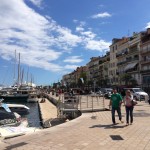
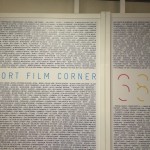
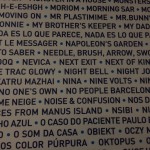
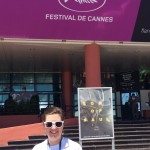
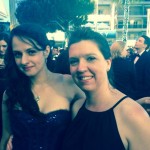

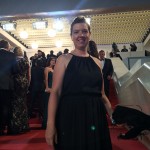
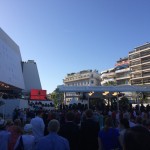

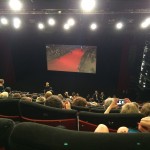


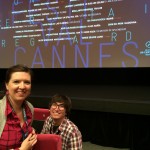
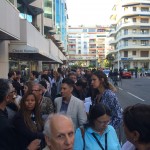

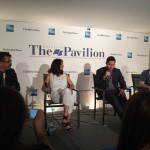

Comments